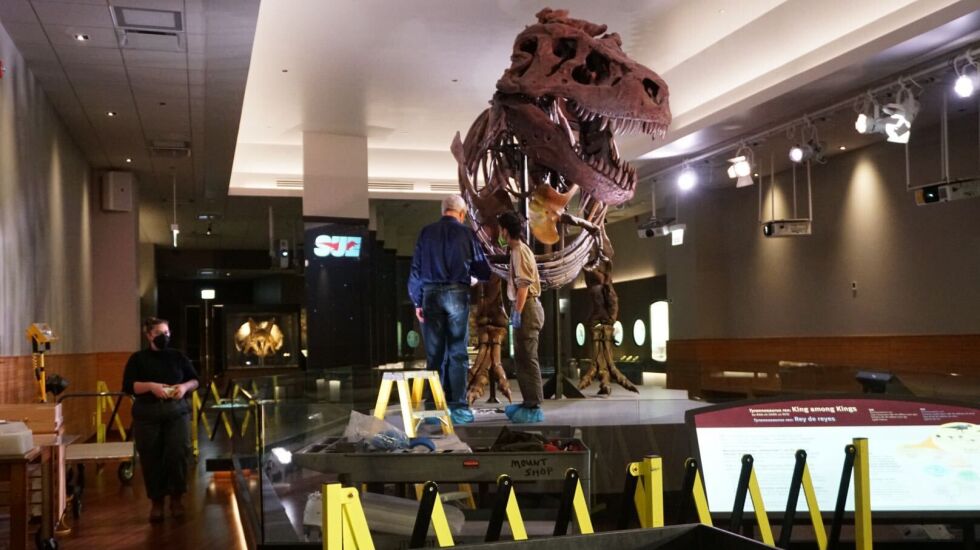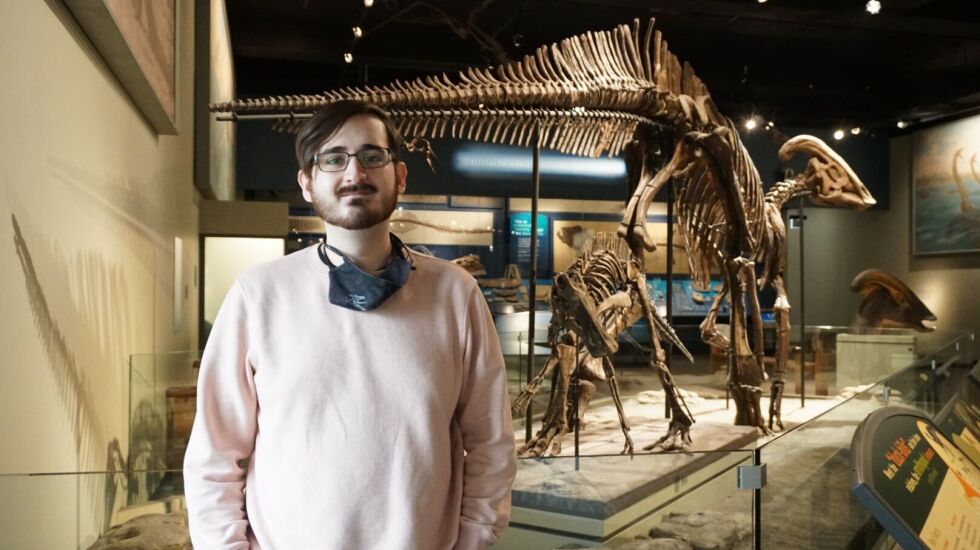
You’ve probably heard the jokes. Now, paleontologists want to know why Tyrannosaurus rexes’ arms are so short.
The Field Museum’s dinosaur Sue is lending a hand — er, an arm — to the project.
Sue’s right arm was removed Monday so it can be CT scanned at the University of Chicago and used to create computer models that will give scientists a better understanding of Sue’s muscles and joints.
Jingmai O’Connor, a Field Museum paleontologist and leader of the project, hopes the tests will help show how the arms were used and ultimately why they were needed.
“There’s all these funny jokes about how a T. rex can’t clap its hands and it can’t play drums or do pushups, but jokes aside, the proportions of these forelimbs are very strange,” O’Connor said.

Sue has the most complete T. rex arms and there are only a few others in the world, according to O’Connor. Due to the lack of arms, the Field Museum will be working with scientists from the University of Alberta who have a different species of Tyrannosaur forelimb to compare with Sue’s.
“We’re going to do these same analyses of both to compare function,” O’Connor said.
O’Connor decided on the project with volunteer worker Ryan Davila.
“It was a matter of finding an interesting topic that would not only work with my interests but also Dr. O’Connor’s interests,” Davila said. “We had a couple of ideas floating around, one of them was the T. rex forelimb. I thought that would be an interesting idea for a thesis and here we are.”

The project is significant in the paleontology world (not to be confused with Jurassic World) as there has been little to no study of T. rex arms in the past 20 years, O’Connor said.
O’Connor said while some theories, including the hypothesis that the arms were used to push the T. rex off the ground from sleeping, may not make sense, they need to be scientifically tested before being dismissed.
“As much as you could make that argument — oh, this is why this doesn’t make sense — quantitatively testing it saying we showed that the muscle force generated by these arms could not counter the normal force of the mass of the abdomen, that’s going to be really important to say for the first time,” O’Connor said.
For the time being, Sue will have a prosthetic right arm and can still be visited by guests. Visitors can pick up O’Connor’s recently published children’s book, “When Dinosaurs Conquered the Skies” in the museum’s gift shop.








